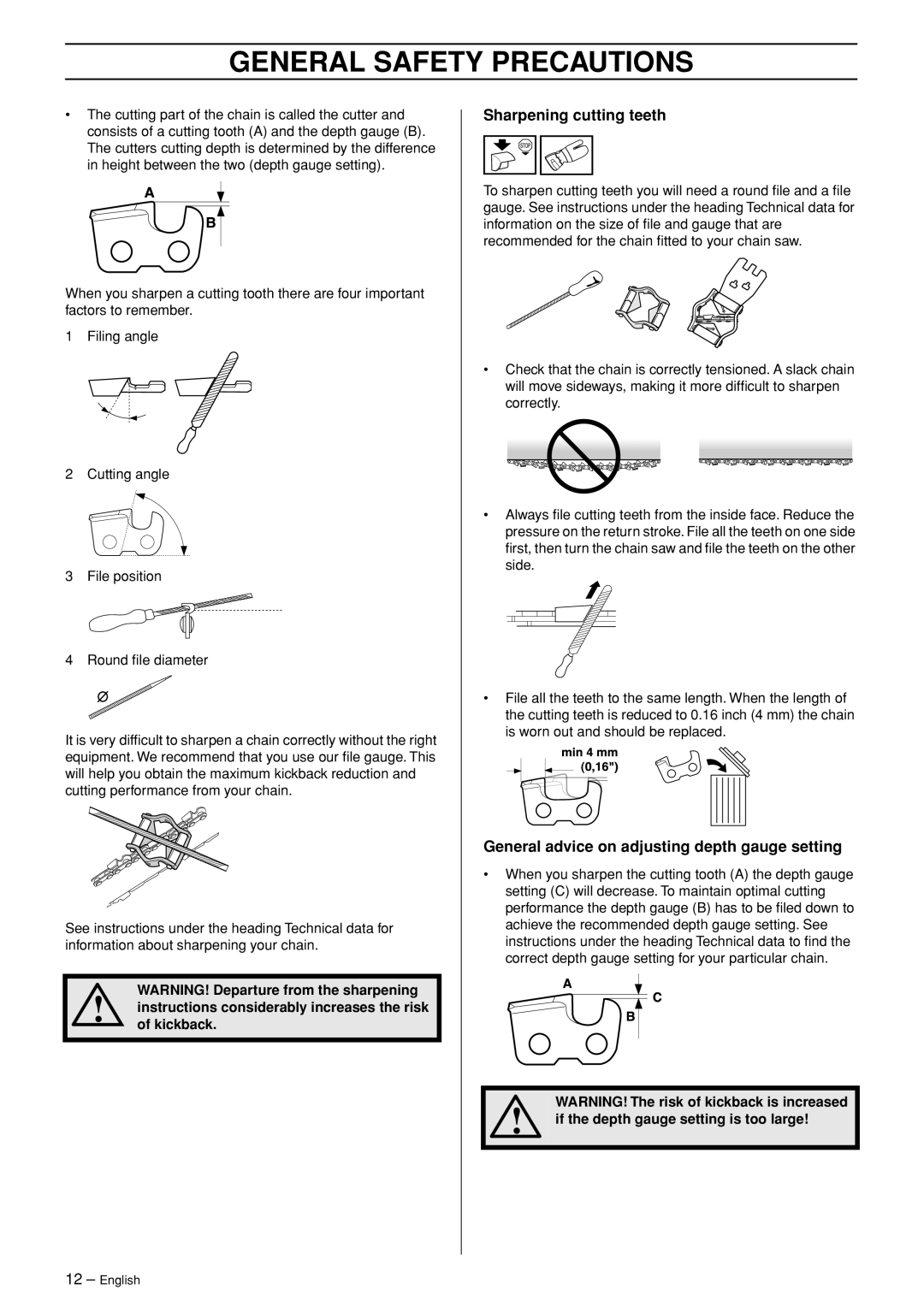
GENERAL SAFETY PRECAUTIONS
•The cutting part of the chain is called the cutter and consists of a cutting tooth (A) and the depth gauge (B). The cutters cutting depth is determined by the difference in height between the two (depth gauge setting).
When you sharpen a cutting tooth there are four important factors to remember.
1 Filing angle
2Cutting angle
3File position
4Round file diameter
It is very difficult to sharpen a chain correctly without the right equipment. We recommend that you use our file gauge. This will help you obtain the maximum kickback reduction and cutting performance from your chain.
See instructions under the heading Technical data for information about sharpening your chain.
WARNING! Departure from the sharpening
!instructions considerably increases the risk of kickback.
Sharpening cutting teeth
To sharpen cutting teeth you will need a round file and a file gauge. See instructions under the heading Technical data for information on the size of file and gauge that are recommended for the chain fitted to your chain saw.
•Check that the chain is correctly tensioned. A slack chain will move sideways, making it more difficult to sharpen correctly.
•Always file cutting teeth from the inside face. Reduce the pressure on the return stroke. File all the teeth on one side first, then turn the chain saw and file the teeth on the other side.
•File all the teeth to the same length. When the length of the cutting teeth is reduced to 0.16 inch (4 mm) the chain is worn out and should be replaced.
General advice on adjusting depth gauge setting
•When you sharpen the cutting tooth (A) the depth gauge setting (C) will decrease. To maintain optimal cutting performance the depth gauge (B) has to be filed down to achieve the recommended depth gauge setting. See instructions under the heading Technical data to find the correct depth gauge setting for your particular chain.
WARNING! The risk of kickback is increased
!if the depth gauge setting is too large!
12 – English
